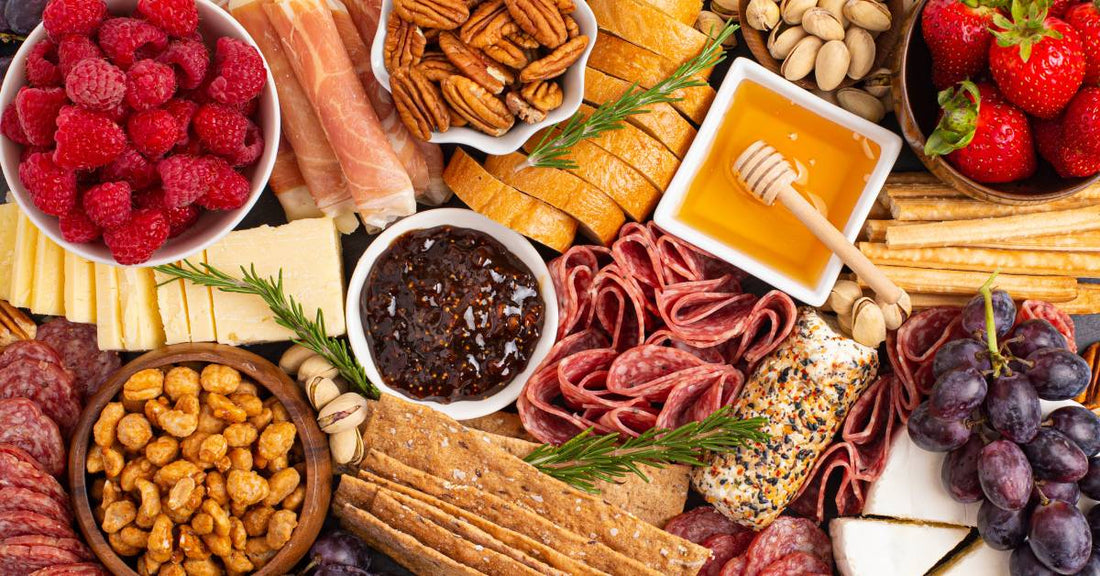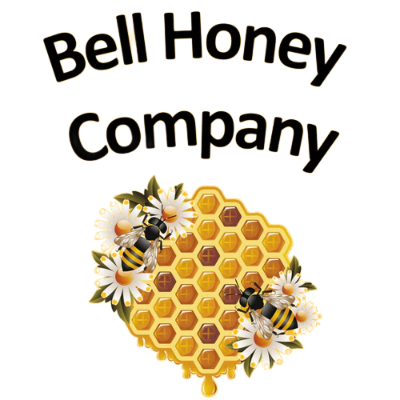
How Honey Can Spice Up Your Charcuterie Board
Share
Why offer one appetizer when you can offer several? That’s where charcuterie boards come into play. Charcuterie boards originated in France (the name refers to cold sliced meats, literally translated as “cooked flesh”), but many cultures developed the idea of offering small servings of meat, cheese, bread, and more on a wooden board. As party platters go, charcuterie boards are an elegant and fun way to give guests a selection of delicious snacks or as a starter to a much larger meal. Easy to assemble and enjoy, it’s always best to change up your offerings and the board’s presentation to keep things interesting. For example, introduce honey. Here’s how honey can spice up your charcuterie board by sweetening and enhancing its offerings.
What Makes Honey the Perfect Condiment?
As we all know, honey is the product of bees that harvest nectar from flowers and convert it into the sweet golden-brown stuff that goes so well with breads and other recipes. Honey is especially yummy when combined with meats, cheeses, and other food items, bringing out their natural flavor while adding some of its own. Different types of honey offer different kinds of flavors, and you can combine them with spices, chiles, and other options to create new and flavorful ingredients. Here are the details:
Enhancing Flavors
Honey’s sweetness is a nice counterbalance to many foods, whether as a dip, marinade, or drizzled accompaniment. Sweet, savory, sour, and spicy have often worked well together, with honey serving as a delicious base. Add it to your charcuterie board and discover the enhanced flavors!
Versatility and Variety
As mentioned, there’s more than one kind of honey. Honey can be sweet and mild, heady and earthy, or any number of other flavors, whether filtered or unfiltered, or sourced from bees that only visit clover, manuka, or other flowers and plants. Add variety to your board by rotating the type of honey you serve.
Sight and Feeling
As with flavors, honeys aren’t universal in their color and texture. The typical golden honey you get in packets and bear-shaped containers at the store is a single type of common honey. Look around; you’ll see a variety of shades online, at farmers markets, and in most food stores. Likewise, ask a seller at the market about texture, and they’ll describe honey that is thin or thick, rich or mellow—all of which are sticky and go great with fruit, crackers, hard and soft cheeses, sliced meats, and more. You’ll never run out of honey types to sample!
However, it’s understandable if you’re still skittish about bringing honey to your charcuterie board. Here are a few suggested pairings to help you get started and impress your guests.

Proper Honey Pairings
Cheeses
Blue cheese and honey is a classic pairing. Buckwheat honey is a favorite of many who regularly entertain. Accompany it and the cheese with light crackers for a sweet, pungent, and crunchy treat. Soft cheeses go well with honey, especially brie. Brie’s creamy mildness and delightful acacia honey create a lovely flavor combo. Add some fresh sliced fruit for extra mild sweetness and flair. Finally, goat cheese, with all its tartness, forms a flavorful alliance with orange blossom or a similarly citrusy honey. Adding pistachios creates textural excitement and deepens the honey’s taste.
Meats
Add honey to olive oil and other marinade ingredients for steaks and similar cuts. Honey is just as friendly with smaller slices of dried meat. Prosciutto and honey are a classic combo. Some chefs suggest adding lavender-sourced honey for a floral note to the meat’s savoriness. Salami and honey create a balance of robust spiciness and sweetness as the honey mitigates any excessive pepperiness. Finally, chorizo brings a delightful, sweet heat when paired with wildflower honey. Add some chili pepper-infused honey to any of your meats as an eye-opening surprise for guests—but give them a fair warning!
Fruits & Nuts
Apples and pairs will always find a happy home on charcuterie boards, but here are a few curve balls to please your guests. Figs and honey go way back, pleasing people’s taste buds since ancient times. Fresh and dried figs are delicious with honey and taste even better with a nice piece of soft cheese. Darker grapes—think Concord and red globe varieties—cheese and honey make a slightly decadent treat. Nuts, particularly walnuts and almonds, are also old honey chums. They provide a salty, sweet, and crunchy option for your guests.
How To Serve It
While you can do a basic drizzle, leave out bowls of honey or give guests small dispensers to add to their items. Get creative with the ways you display honey on your board.
Add a Honeycomb
Adding a piece of authentic honeycomb dripping with sweetness adds natural beauty to the board and offers guests the fun experience of scooping out their honey portions to add to their snacks.
Infusion Diffusion
Adding other herbs, spices, chilis, truffles, and other flavors to honey can be a bit daring but well worth it. For example, adding rosemary to a darker honey adds extra flavor, while pepper flakes beautifully wake up guests’ taste buds.
Do a Dip
Mix honey with Dijon mustard, balsamic vinegar, and other dippable condiments and dressings, then present guests with crusty bread, pretzels, fried dough, and assorted chips for a delicious dipping sauce that can be savory, tangy, sweet, and more.

Honey, I’m Home!
That’s how honey can spice up your charcuterie board. Bring extra yumminess to your board with a little help from the bees! Plan your honey offerings by testing different combinations of meat, cheeses, fruit, and nuts in advance of the event. Have fun with it! Plenty of recipes are available online, but don’t be afraid to experiment. You can also contact us for a consultation if you need more ideas for different types of all-natural honey that will please your guests. We’re experienced honey producers with a wealth of knowledge (and parties) in our past! Contact us today. We look forward to hearing from you!
